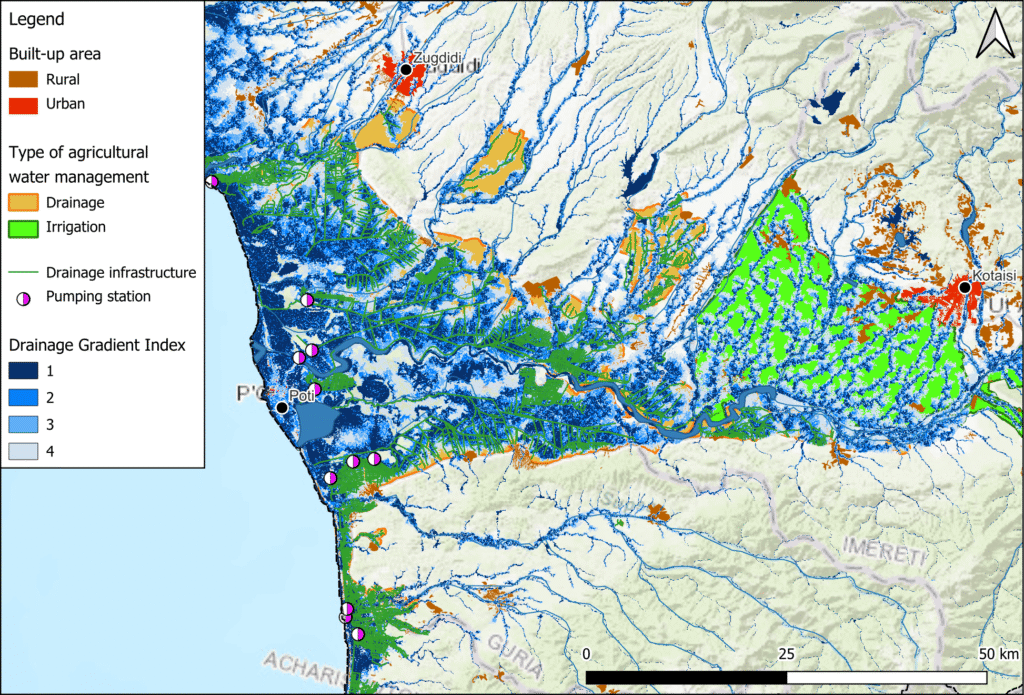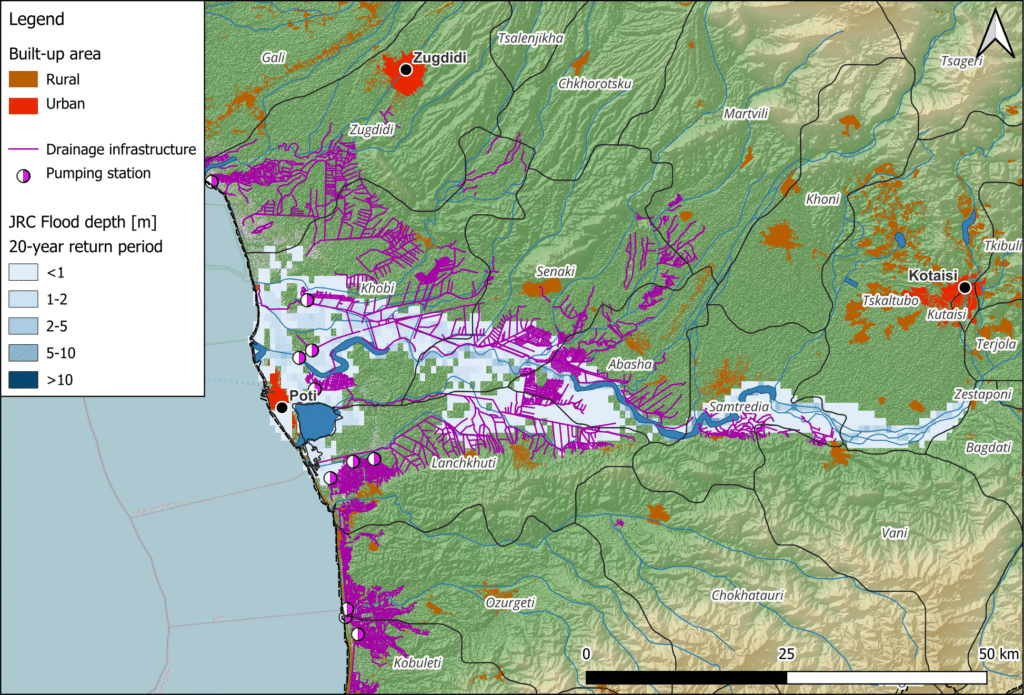There is great potential for hydropower in Georgia, and this natural resource is likely to be increasingly utilised for power generation in the future. With the escalating demand for energy, government authorities are keen to harness renewable energy from the country’s main rivers. Often these projects aim at remote communities for which connecting to the national power grid is expensive. Hence, local hydropower production is an attractive and sometimes viable option. Critical is to conduct accurate feasibility assessments for hydropower generation at the different potential sites of interest considering climate change impacts. This work is a glacio-hydrological assessment of the expected river discharge at the planned hydropower sites in the Mestiachala river, Georgia.
Based on the requirements of the project, the Spatial Processes in Hydrology (SPHY) cryospheric-hydrological model was selected for the assignment. SPHY is a hydrological model that simulates the runoff at any location within the basin at a daily timescale. SHPY is ideal to assess glacier and snow influence in the river discharge and evaluate the impact of climate change. SPHY was used to predict the river discharge for the extended period of record and provide enhanced flow duration curves for hydropower assessment. In addition, total runoff components were quantified such as snow and glacier runoff.
This glacio-hydrological assessment delivered river discharge estimates for intake locations of two planned runoff river hydropower plants near Mestia, Georgia. The assessment included the calibration of a hydrological model, daily river discharge simulation for an extended period of record (1980-2015), climate change scenarios, and the derived flow duration curves to evaluate the flow operation of hydropower turbines. In addition, total runoff components were quantified such as snow and glacier runoff.
The daily river discharge was simulated at the two intake locations for two future periods (for the end of the concession period and for the end of century period) considering two climate change scenarios (RCP4.5 and RCP8.5). Hydrological model simulations were developed using future precipitation and temperature predictions and future glacier extent predictions. The climate change scenarios provide an evaluation of flow operation uncertainty. The daily flow calculations for the two sites can be used in the hydropower calculations, and to assess the overall profitability of the planned investment, taking into account energy prices, demand, etc.


